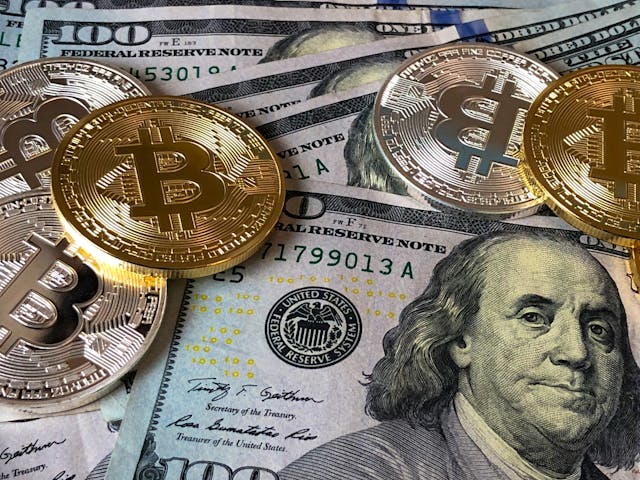With globalization and digital advancement, the world is more interconnected than ever before, creating a demand for seamless and efficient financial solutions across borders. Traditional financial systems often struggle to meet the needs of modern consumers, especially when it comes to international money transfers. However, peer-to-peer (P2P) currency systems have emerged as a promising alternative, simplifying international transactions and offering a more cost-effective solution. In this article, we will explore how P2P currency is transforming the financial landscape for global consumers, its benefits, and what it means for the future of financial transfers.

Post Contents
What is Peer-to-Peer Currency?
Peer-to-peer currency allows individuals to send and receive money directly from one person to another without relying on a centralized financial institution. Using digital platforms, P2P currency systems enable users to transfer funds globally, providing a fast and affordable alternative to traditional banking services. These systems typically operate through secure, digital platforms where users connect directly, reducing intermediaries and offering a streamlined, convenient experience. You can also explore Immediate Exalgo +4 for further information.
How Peer-to-Peer Currency Works
P2P currency platforms match people looking to transfer funds in different currencies, enabling transactions that bypass currency exchange fees and delays. Users create accounts on these platforms and input the amount they wish to send or receive. The system then matches them with other users willing to trade, effectively creating a cross-border transaction that’s often faster and less costly than traditional banking channels.
Key Features of P2P Currency Systems
- Direct Transactions: P2P currency systems facilitate person-to-person transactions without intermediary institutions, saving time and reducing fees.
- Decentralized Exchange: Unlike conventional systems, P2P currency relies on decentralized platforms that match users based on currency needs.
- Accessibility: Users from various countries can access P2P currency platforms, allowing for a truly global solution that reaches underserved regions.
- Security and Privacy: Advanced encryption and security protocols ensure user privacy and protect against fraudulent transactions.
Benefits of Peer-to-Peer Currency for International Consumers
The growth of peer-to-peer currency has been fueled by its many benefits, which make it a popular choice for international consumers. Below, we highlight some of the primary advantages of P2P currency systems.
Lower Transaction Fees
One of the most significant benefits of P2P currency systems is the reduction in transaction fees. Traditional banks and money transfer services typically charge high fees for international transfers, especially when currency exchange is involved. P2P platforms eliminate many of these costs by directly connecting users with each other, allowing them to negotiate rates without paying a middleman.
Faster Transfer Times
When transferring money across borders, traditional methods often result in long wait times due to the number of intermediaries involved. Peer-to-peer currency platforms streamline this process, allowing for quick transfers that sometimes settle within minutes. This rapid speed is especially useful for people needing to send or receive money in urgent situations, such as paying overseas tuition fees or covering emergency expenses.
Increased Accessibility for Underserved Markets
Many individuals worldwide lack access to traditional banking services, especially in rural or economically challenged areas. P2P currency platforms bridge this gap, allowing unbanked or underbanked individuals to participate in the global economy without the need for a traditional bank account. This increased accessibility fosters greater financial inclusion, offering more people a secure way to manage and transfer funds.
Popular Use Cases of Peer-to-Peer Currency
P2P currency platforms have wide-ranging applications and are particularly useful for individuals and small businesses engaged in cross-border transactions. Here are some common use cases:
International Remittances
Remittances from expatriates and migrant workers are a vital source of income for many families worldwide. Traditional methods of sending remittances are often slow and costly. P2P currency platforms provide a faster and more affordable alternative, allowing individuals to support their families back home more effectively.
Freelancers and Remote Workers
The rise of remote work and the gig economy has led to a surge in freelancers and remote workers needing to receive payments from international clients. P2P currency platforms provide a straightforward way to receive payments without the excessive fees charged by banks or international payment processors. This makes them ideal for those working with clients in different parts of the world.
Small and Medium Enterprises (SMEs)
Small businesses, especially those engaged in international trade, often struggle with the high costs and delays associated with traditional financial systems. P2P currency platforms provide SMEs with a way to handle international transactions more efficiently, helping them save on fees and improve cash flow. This increased efficiency allows these businesses to expand their operations and reach global markets with ease.
The Future of Peer-to-Peer Currency
As technology continues to advance, the potential of P2P currency systems to transform international finance will only grow. Innovations in digital platforms, mobile applications, and blockchain technology are driving greater efficiency, security, and transparency in P2P currency exchanges. These developments could make P2P currency systems even more accessible and reliable, attracting more users and increasing their role in global finance.
Moreover, the integration of P2P currency platforms with everyday banking and payment services could create a seamless financial ecosystem that caters to diverse consumer needs. By enhancing user experience, reducing costs, and providing more control over financial transactions, P2P currency systems could become the preferred method for international transfers in the near future.
Conclusion
Peer-to-peer currency systems are reshaping the way international consumers handle financial transactions, offering a faster, more affordable, and accessible alternative to traditional methods. From freelancers and expatriates to small businesses, P2P currency provides a solution that meets the unique needs of global users. With technology driving continual improvements in P2P platforms, this new financial model promises a future where international transfers are more straightforward, inclusive, and cost-effective than ever. As adoption grows, P2P currency is likely to become a cornerstone of cross-border financial interactions, simplifying global finance for consumers around the world.